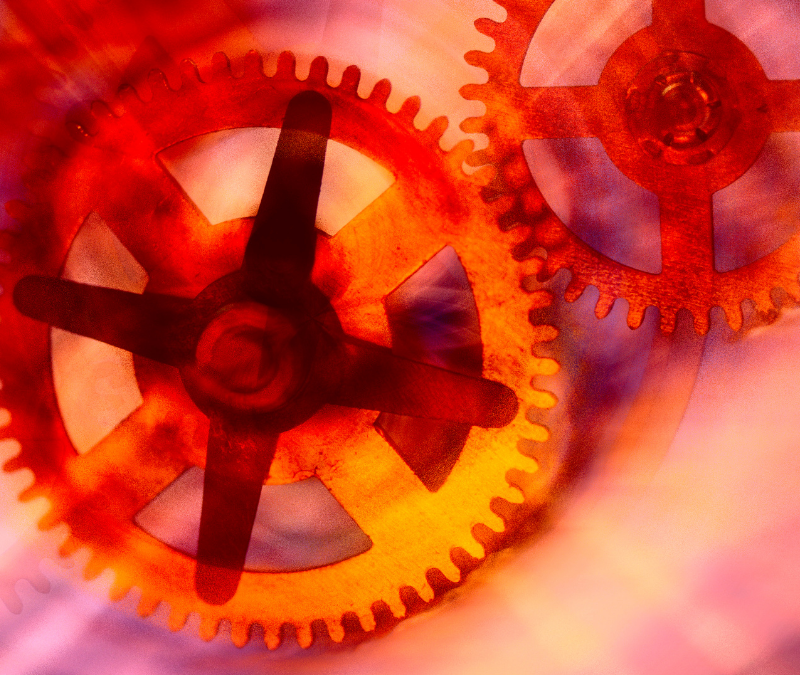Costs of Operation
For our running example in this article, let us choose the manufacturing of a bowling pin, using just an entire tree per bowling pin, as famously represented in this segment from a certain TV show.
Laugh all you want at the comic exaggeration represented in that clip, but it is true to many aspects of the manufacturing process, particularly those that make use of the more obvious (read: robot-involved) tasks employing artificial intelligence.
Most, if not all, modern manufacturing processes involve man and machine working together in some capacity, but it is increasingly the case that, as shown in the clip, machine learning agents often work independently of any human supervision.
As a result, it is not immediately obvious to humans whether the machines are working at full capacity or are in a sort of decline that will end in costly maintenance. Installing and keeping them running are enough, but when a machine is in need of repairs, especially ones that can offset a future breakdown, it is equally important that these machines get regular check-ups.
You do not need to hire an around-the-clock technician to regularly attend to these machines. Instead, you can spring for a less costly, yet more efficient and accurate, solution, namely an artificial intelligence agent whose primary task is preventative maintenance prediction.
Prepare for and Stop the Worst with Preventative Maintenance Prediction
At the core of many artificial intelligence processes is the task of prediction. In some cases, it is a rote react-to-stimulus task, like the robotic whittlers responsible for turning a tree trunk into a bowling pin. But when it comes to the more complex tasks such as predicting when that metal machine whittler will break down, start rusting, or just need a nice greasing, then an AI agent will need to be a little more complex.
Complex AI tasks gain their complexity from the (let us try another word here) intricacy of the data it is observing, or at least the intricacy that emerges when every data point of interest is collected in a mass meant to be analyzed.
In the case of predicting a maintenance schedule for any given machine, the following data points will be collected and analyzed in tandem with each other, allowing for the sometimes-hard-to-discern interrelationships between these differing categories of data: workplace environment, history of breakdown, current and past and projected conditions and level of performance, and other information.
The goal of this data and relationship analysis is to figure out an accurate projected timeline for the life of the machine, as well as a good reading of its current conditions. These predictions are not given to you for the sole purpose of knowing when a pin-tossing robot arm is going to crap out, but identifying the ways in which its “health” can be improved and lifetime extended.
Finding Out What Matters
As hinted above, one of the biggest assets of using AI for preventative maintenance is that AI can, well first off analyze scores of Big Data in minutes that no human can hope to do in a lifetime, but also find within those Big Data sets patterns that the human eye may not discern.
With years of performance data for a machine at hand, the AI agent can look at that side by side with years of environmental conditions for each day at the factory that the machine is housed in.
What may appear at first to be spotty performance in a possibly declining machine could actually be explained by changes in temperature—meaning, if the factory is too hot, then the machine’s performance could predictably falter. In turn, you could save money on a costly repair, and instead just keep the temperatures a bit lower from now on.
In Sum
AI prediction platforms are affordable solutions that any manufacturer should consider incorporating into their practices, and preventative maintenance predictors, such as those offered by Findability Sciences, can lead to more accurate prevention measures. In turn, you will be enabled to enjoy a longer lifetime of use for the equipment that you employ in your factory or warehouse. By analyzing prodigious amounts of data, machine learning agents are able to discern useful patterns across the many categories of data that go into making a maintenance-based prediction, allowing you to figure out which repairs, if any, are necessary, saving you money and energy in the long run.


Recent Comments